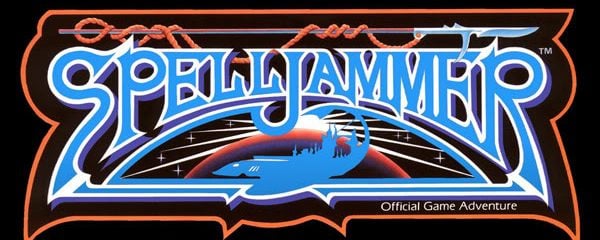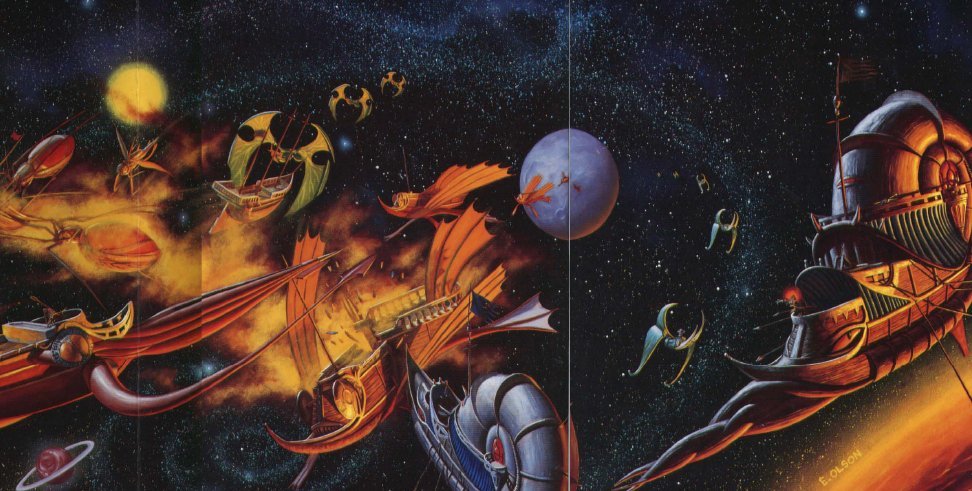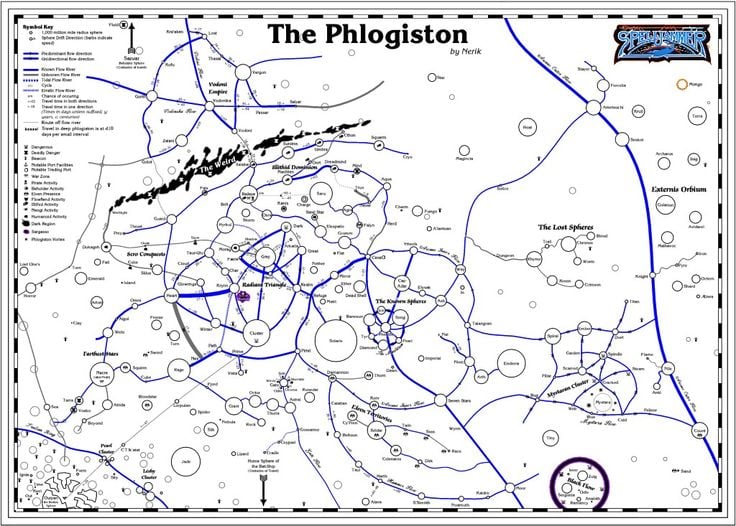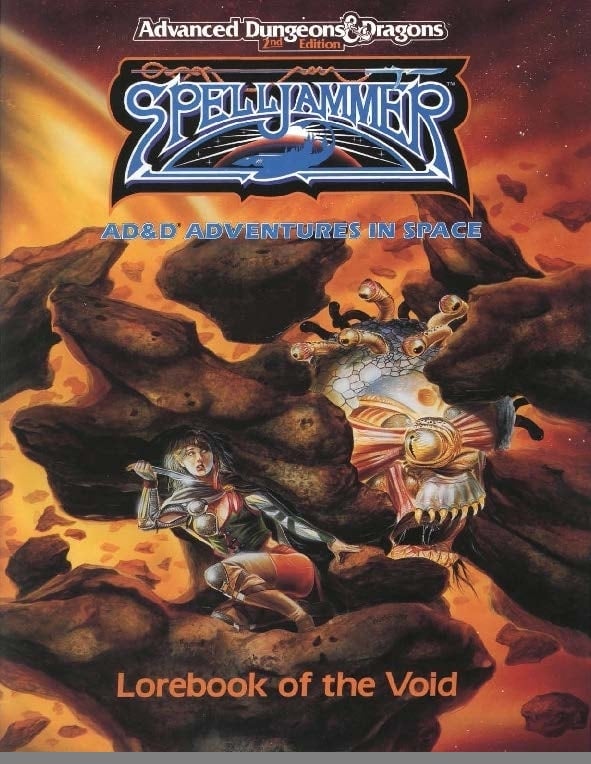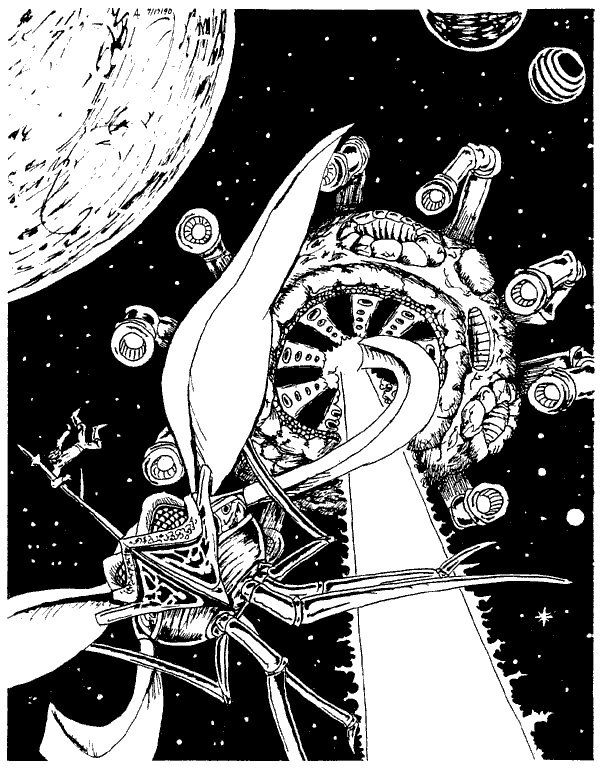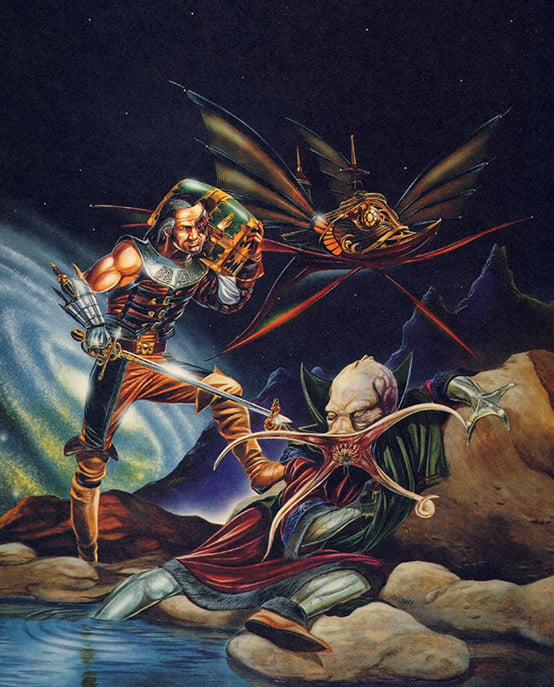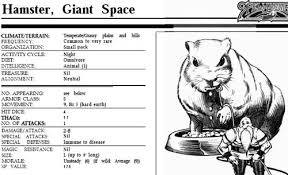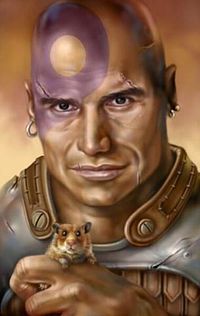Realm Guide – Space, the Final Frontier (D&D edition)
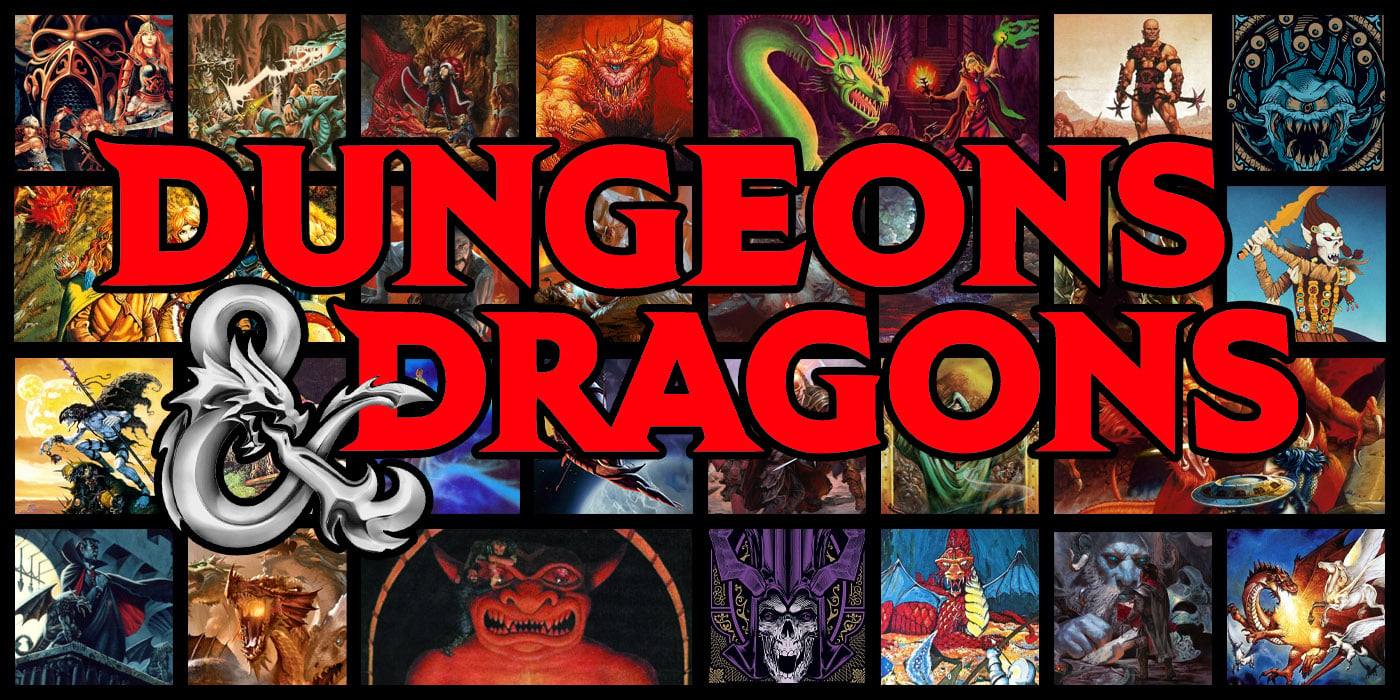

I am trying to summon this week’s realm guide, but I can’t seem to cast the proper spells. It’s almost like someone’s using some kind of spell…jammer.
Oh boy oh boy. Strap in friends. Get out your Phlogiston-tuned sextant, make sure the catapults are loaded on your stolenLEGITIMATELY SALVAGED NAUTILOID, and get ready for things to get weird, because this week we’re visiting that most final of frontiers that D&D has to offer. We’re going Spelljamming.
It’s gonna get weird. And it’s gonna get awesome.
Spelljammer was introduced early in the life of 2nd Edition–it was published back in 1989, the same year that they transitioned to 2nd Edition AD&D. It has been around, in one form or another, ever since. Spelljammer was an ambitious project–it was the first attempt to provide a unified field theory for the game. It laid groundwork for how the various campaign settings might all exist in the same overarching cosmology. So whether you were playing on Krynn, or Greyhawk, you might be able to move between the–well, not Planes, but a sort of Ptolemaic representation of slave filled with proto-steampunk ships that were a blend of both arcane technology, age of sail ships, and discarded Weapons and Warriors playsets.*
It’s not everyday you get to use a word like Ptolemaic, but it’s the most apropos here. In the grand cosmos as put forth by Spelljammer, each entire campaign setting (including their deities and realms) reside within their own Crystal Sphere. Much like the Celestial Spheres that are their inspiration (and the reason I get to use Ptolemaic), the Crystal Spheres are spherical constructs made of an impenetrable material that encapsulates the planetary system of a given campaign. Usually the spheres are identified as the “space” of a campaign setting. So you might have adventures in Greyspace or Krynnspace, for instance.
And it’s here, among the Crystal Spheres, that we get our first look at what Space is like in D&D. What is it like, you might ask, mind filled with visions of ships of elven glass, set into the sky upon a pillar of flame, bearing one of the Silmarils to the heavens?
Well for one, it’s full of Phlogiston. Also called “The Flow,” phlogiston is a gas-like substance that basically makes up space in D&D. While the various worlds and their respective cosmologies are contained in their own Crystal Shells, the shells themselves bob gently in the currents of the Phlogiston, which fills the wildspace between spheres. It is a brightly colored and combustible material with many unique properties, notably it can’t enter any Crystal Sphere, even by the will of the gods. Travel through the phlogiston can be a dangerous affair, as monsters, pirates, and bigger meaner monsters dwell within it–and you can get lost, pretty easily. Most Spelljammer captains rely on flowrivers–places where you flow faster in the phlogiston in one direction–to get around with any kind of expediency.
So with those concepts in mind, let’s dive in to the, uh, worlds of Spelljammer and see what makes them tick.
The Radiant Triangle
This is the place where things are the most familiar. A densely packed region, full of phlogiston and crystal spheres, the Radiant Triangle is home to the main campaign worlds of D&D. It’s here you’ll find the Crystal Spheres containing Krynnspace, Greyspace, and Realmspace (being home to Krynn, Oerth, and Faerun [Toril] respectively). But, it’s not enough to know that there’s a region of space where these star systems float near to one another in some magical float-zone.
No, the release of the Spelljammer boxed set was packed with information that expanded the scope of the worlds within.
Greyspace
Oerth’s moons became the first two planets in the system, leaving Oerth the third rock from its sun. New planets were added, including Edill a gas giant populated by dragons, Conatha, an elliptical water world which housed all the aquatic creatures you’d want, and Ginsei, the crescent world.
Krynnspace
Krynn gets a whole solar system’s worth of planets this time around. You’ll find:
- Sirrion–a fiery lava world, named after one of the gods. It is populated by occasional chunks of basalt, floating iceberg-like in the magmatic seas. Populated by fire guys (Azer, efreeti, Salamanders, etc.)
- Reorx–another world named for a god (sensing a pattern here?). It is full of mountains and valleys, and is rumored to be where the god lives.
- Chislev–the jungle planet.
- Zivilyn–which is a lot like Jupiter, if all its moons were named after the heroes, villains, and gods of your tie-in novels.
- And finally (Mrs.) Nezhmyth–a mysterious planet that is primarily invisible all the time.
Realmspace
And then there’s Realmspace, which contains Faerun, a cluster of asteroids, which function as one vague world, called Garden–notable for being full of space pirates–and a host of other planets that are largely ignored. Which may mean they’re one of the places in the Forgotten Realms that are in need of heroes.
Of particular interest here, Realmspace also contains the various stars of the constellations that are referenced within Forgotten Realms and its associated novels. You’ve got the Harp and the Lady, among others. Worth pointing out because it’s here that we have a chance to talk about what stars are like in Spelljammer. They can be many things–if you were to pilot your spelljamming ship into the fiery heart of a star, you might end up passing straight through the crystal sphere and into the space beyond. Or you might be incinerated.
Also of note, Realmspace is one of the few core settings that is home to spelljamming fleets. The Shou, a fleet of elven spelljammers operates here, bringing their mighty Dragonships to bear against any who stand in their way.
The Spaces Between
But the majority of Spelljammer adventures happen outside of the Crystal spheres. After all, you’ve got yourself a magical ship–why would you want to muck about sailing between campaign worlds when you have the entirety of space before you.
Well, I mean, sure a beholder like that’s a great reason not to go too far into the unknown.
In the outer regions (not the lost worlds though), you can find the various races/monsters/peoples of D&D represented, though they all take on a unique flavor that marks them as part of the Spelljamming world. Fittingly enough, D&D’s outer space is populated by the races that are described as “alien.” So, you’ll find beholders lurking around every corner, it seems. And not just beholders floating out there by themselves, like our friend up there. They have great tyrant ships that rain death upon all who oppose them:
We asked a Beholder what it needed with a Spelljammer, and it just shrieked incoherently at us for fifteen solid minutes.
Mind Flayers were strangely prevalent as well. Though they weren’t quite the mind-hungry colonists that are presented in D&D standard. They were much more mercantile, flying around in their great nautiloid ships and bringing exotic treasures with them. They were purported to be some of the better Spelljammers–and, fun fact, there is mention of their spelljamming ships in Volo’s Guide to Monsters, which brings Spelljammer well into fifth edition–if only tangentially. But it’s still there, which means if you really wanted, you could have your party discover a nautiloid and carry out the fine tradition of stealing Illithid treasure.
Pictured: Tradition!
This is also where you find creatures like the spiderlike slavers, the Neogi (another creature you can find in Volo’s guide), the Arcane–who are both the creators of the Spelljamming helms, and very difficult to google (since “D&D Arcane turns out to be less helpful than you’d think), everybody’s favorite arquebus-loving hippomen, the Giff, and of course, Stellar Dragons. Which are enormous, iridescent purple dragons that float silently and gracefully through the cosmic void. Kind of like a space whale, but a dragon.
And I’d be remiss if I didn’t mention Giant Space Hamsters, which are notable for powering Gnomish spelljamming ships via treadmill, and for appearing in miniature form in Faerun during the Bhaalspawn incident, shortly after the Time of Troubles.
He was right! Look you can see it clearly! And you thought he just took one too many blows to the head.
I could go on, but the whole point of Spelljammer is that it’s a world that begs you to explore it. It is full of hints and idea seeds–like the world of Falx, which has “hundreds of Tarrasque-like creatures roaming in packs.” Or Red Eyes, which is a pair of fire worlds that glare out from their Crystal Sphere like they are the eyes of some great malevolent entity. There are hundreds of details like that, scattered throughout the various supplements, each one meant to spark your imagination and get your players out there exploring.
Because with Spelljammer, the real adventure is about discovery. Once you have your own spelljamming ship, it becomes hard to threaten players with the destruction of the world. I mean, sure you can find something the players care about–but, with access to ships that can sail between worlds, they can often just leave. So what’s exciting is getting out there and seeing what lies around the next corner. It might be pirates, or tricky mind flayer merchants, or a world of emerald, where modrons toil endlessly trying to create a perfect, ruling modron that will oversee their ultimate destiny.
It’s the ultimate sandbox–the sandbox that contains all other sandboxes in it–and interestingly enough, the fun parts are the places that are unknown.
So get out there and explore, adventurers. All of space awaits.
*How else do you account for the plethora of ballistae and catapults that littered these ships?

